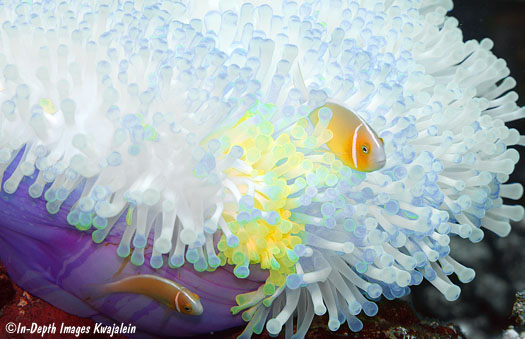
During an El Niño in the fall of 2009, the water temperature at Kwajalein peeked up a degree higher than usual, reaching 86°F (30°C) in late September and lasting into November. During this time, several species of hard corals and a few kinds of anemones bleached out. The higher temperatures caused them to expel their symbiotic unicellular "algae" (protozoans called zooxanthellae), which typically give the anemones and corals their background brownish color. Without the plants, the natural colors of the anemone show through--usually white but often yellow and sometimes with colored tentacle tips. While many of the badly bleached corals did not survive, most of the anemones made it through and went back to normal after the water cooled down again. 2009 was the first time we had noticed any coral or anemone bleaching in all the years we had been diving there (off and on since 1965). So it seemed 2009 was an unusual year. But then it happened again in 2013, again in 2014, yet again in 2016, to some degree in 2017 and seriously in 2018. All bleaching episodes started with the water temperature reaching 30°C, something it had not done prior to 2009. This starts happening in September. Usually by December, maybe sooner, the water temperature has dropped back down to 29°C or less, but often the corals and anemones remain bleached several months. We have seen these Heteractis still bleached as late as March following a bleaching event the previous fall. The longer they stay bleached, the more likely the coral or anemone will die. With these repeated high temperatures, not previously seen in our experience, there is no doubt the ocean is warming. And it is killing coral and anemones. While most of the Heteractis magnifica survived 2009, they were left in a weakened state, unable to tolerate more warm water. Since 2009, Kwajalein Atoll has lost half or more of its Heteractis magnifica; all 14 or more on T-Buoy coral head are gone, as are all five we knew of on Y-Buoy and several from V-Buoy. All are missing from Twin Peaks. One of our favorite sites, B-Buoy, where there were 10 of these anemones in one line and another six at least scattered around, is down to about eight left. As climate change and ocean warming continue, Heteractis magnifica will likely go the way of Heteractis crispa, which has essentially vanished from Kwajalein Atoll. Another page shows a few more bleached Heteractis magnifica.

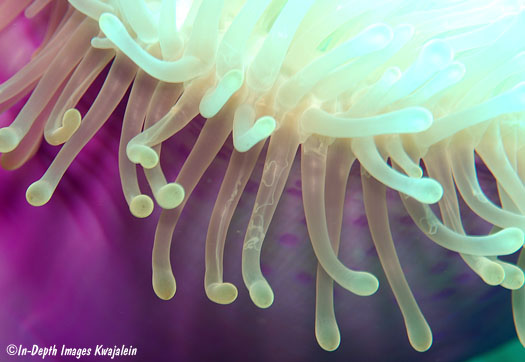
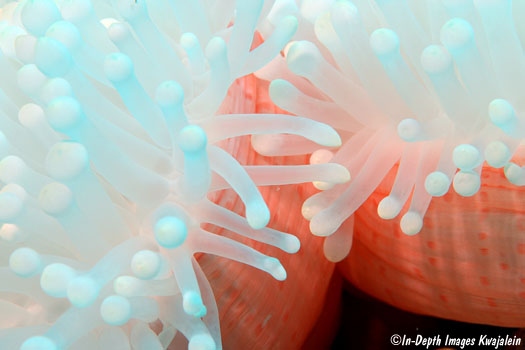
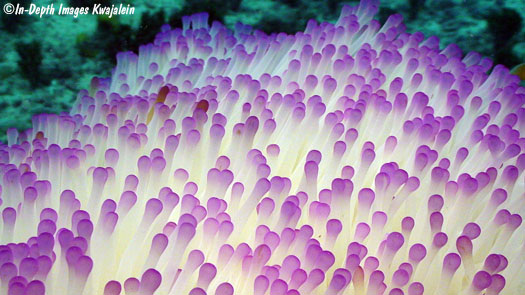
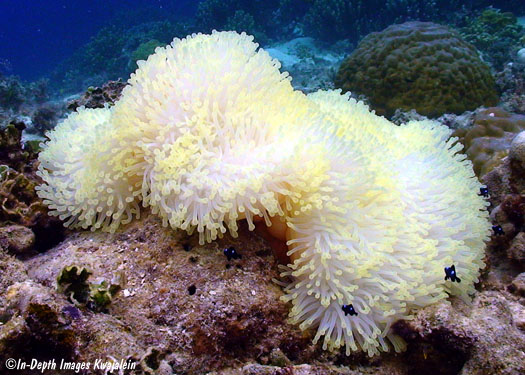
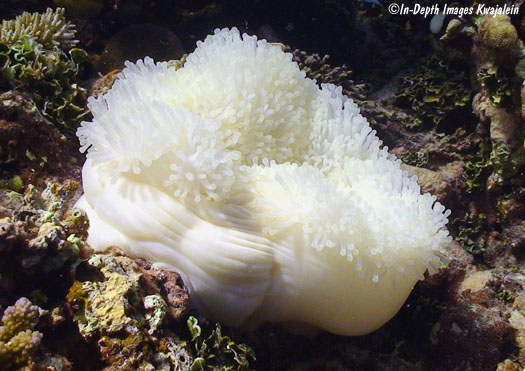
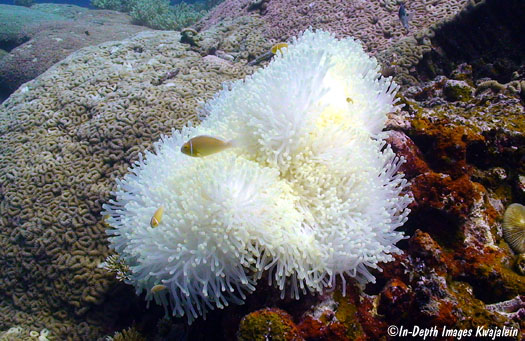
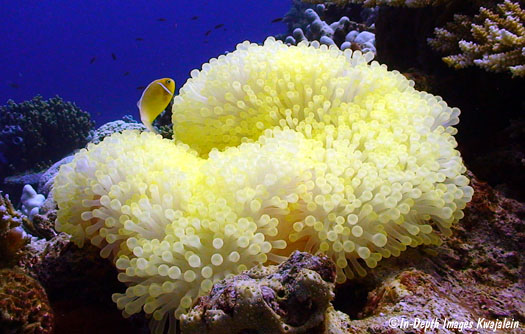
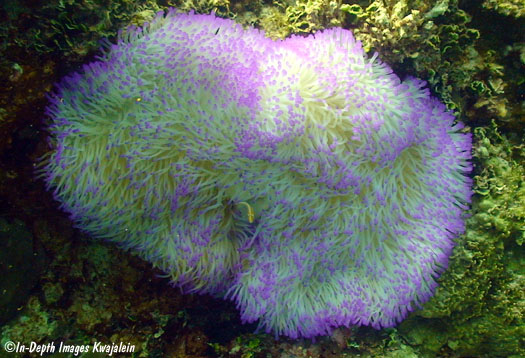
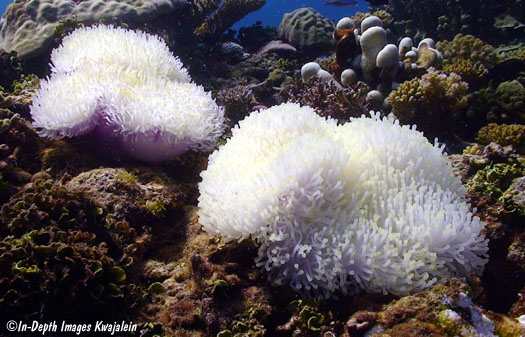
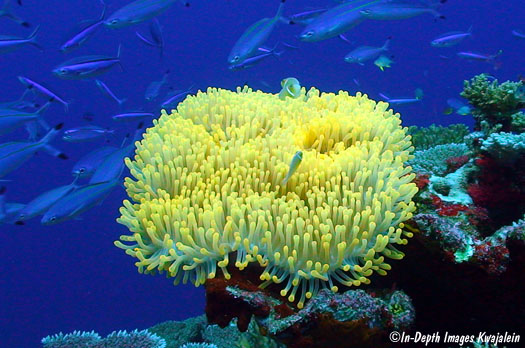
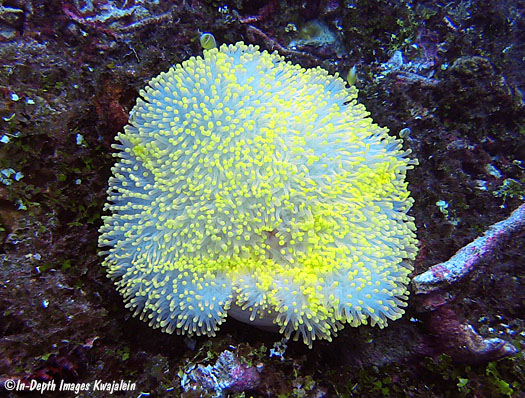
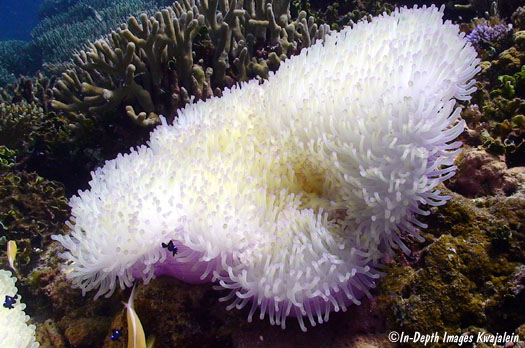
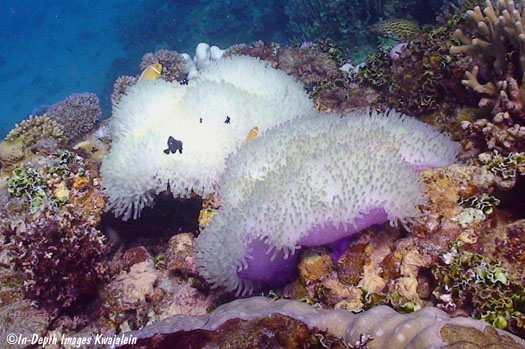
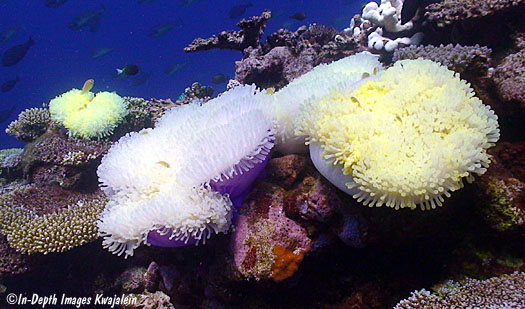
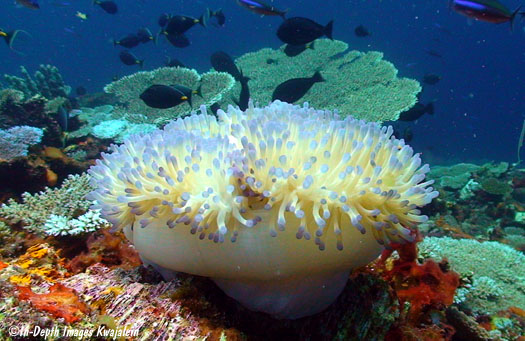
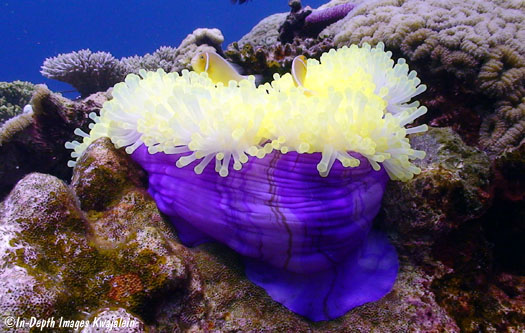
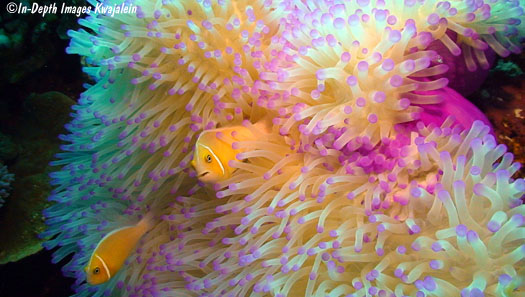
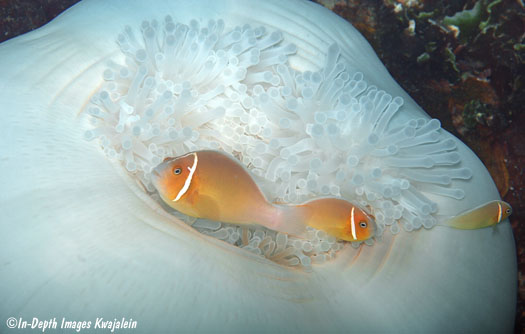
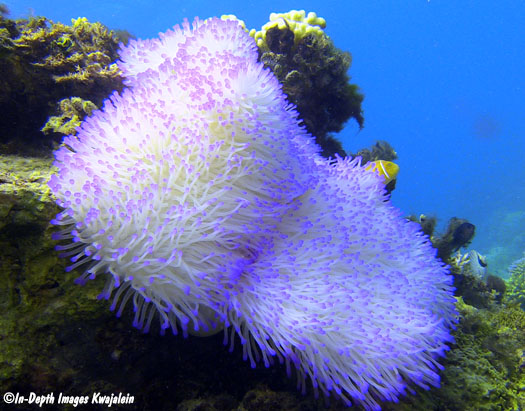
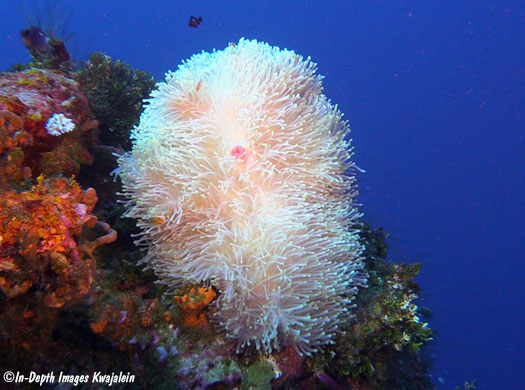
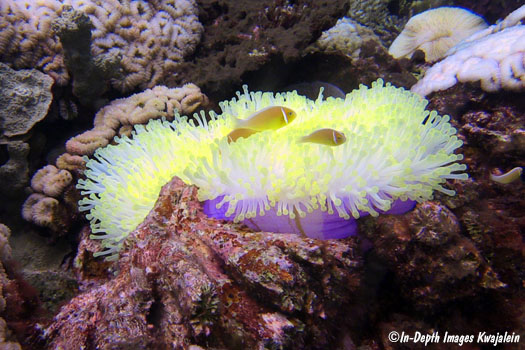
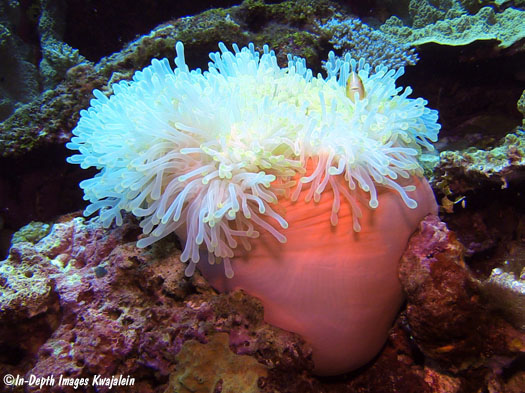
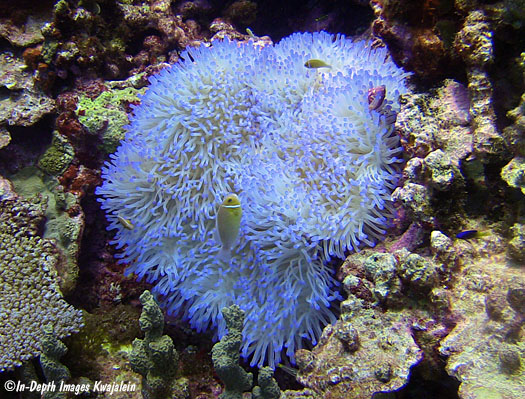
This bleached anemone was on a sunken buoy.
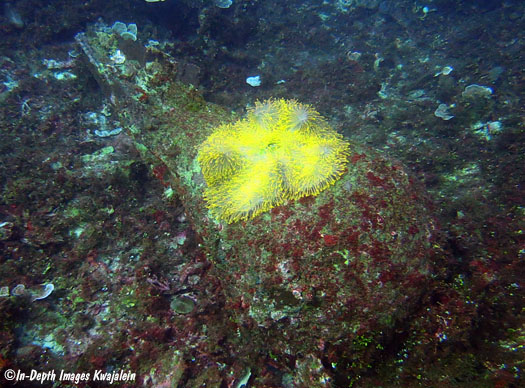
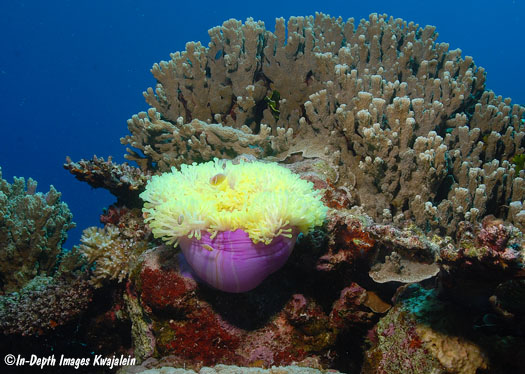
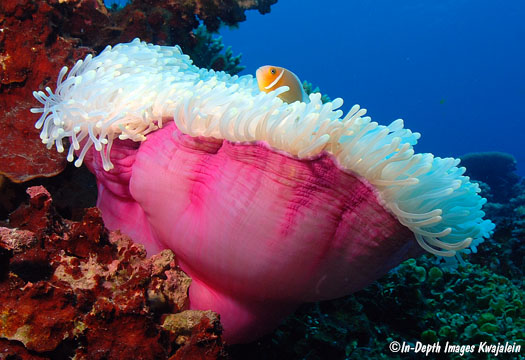
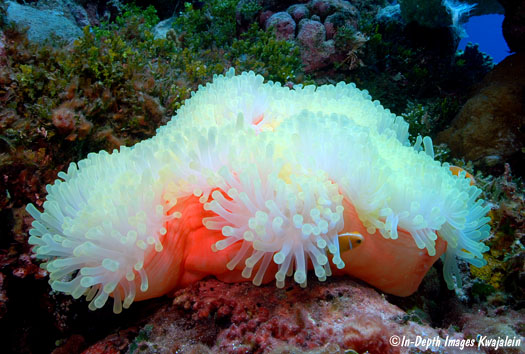
This one is only partially bleached; underlying tentacles are still brown.
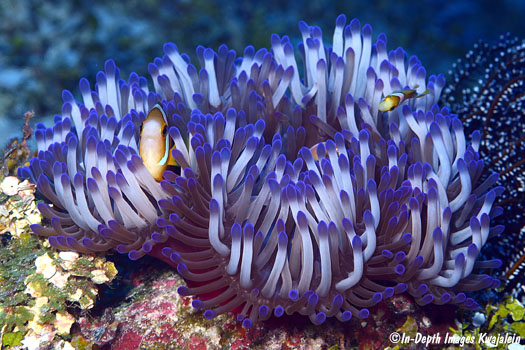
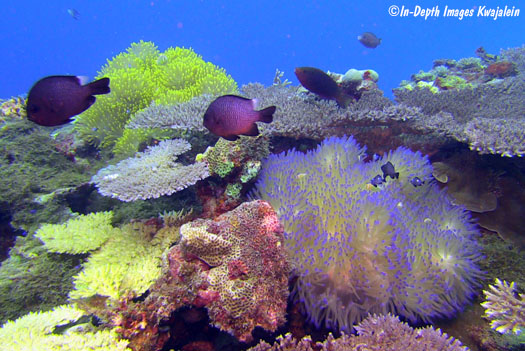
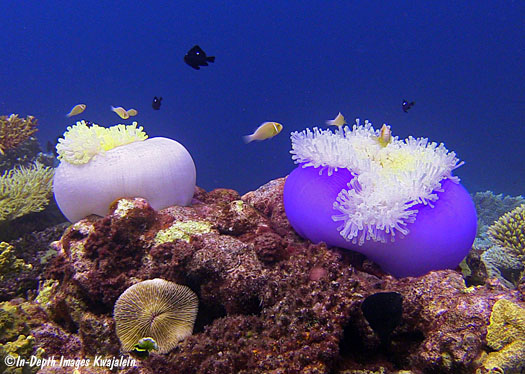
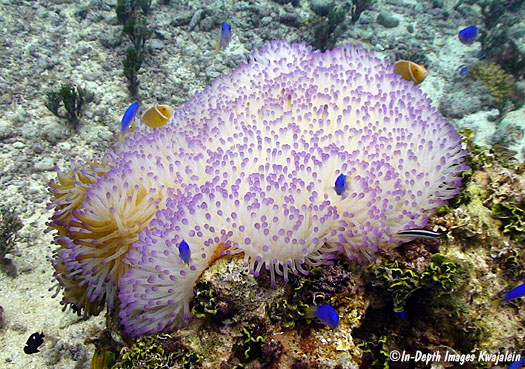
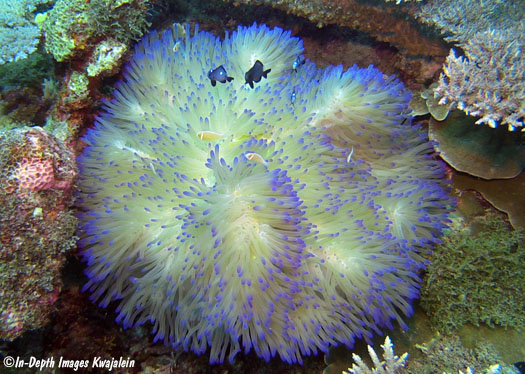
The photo below shows three Heteractis magnifica in an unbleached state.
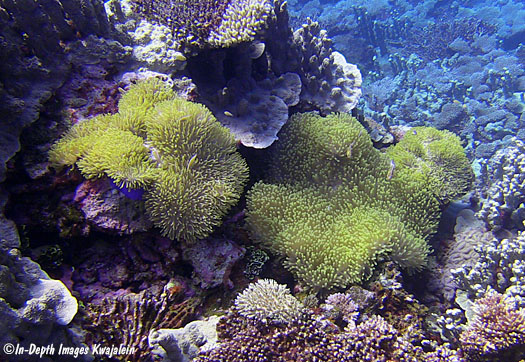
This photo shows the same three anemones during a bleaching episode in September, 2014.
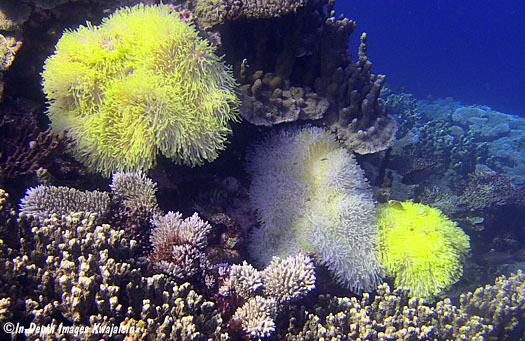
Created 1 September 2010
Updated 28 July 2018